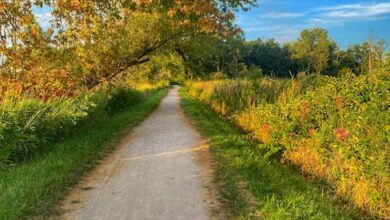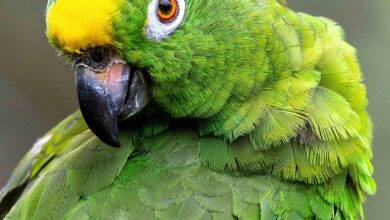Beyond the Dungeon: Unpacking “Dungeon Crawler Carl” and LitRPG

In a world buzzing with constant digital updates and the endless pursuit of the next big thing, sometimes the most enriching experiences come from unexpected corners. We often find ourselves seeking balance, whether it’s through diving into a captivating story, refining our personal organization, or simply stepping away from the screen to reconnect with the natural world. Stephanie Arnett, whose role often involves navigating the complexities of information, knows this balance well. She’s found some truly compelling ways to explore, reflect, and engage with the world around her.
Stephanie’s current fascinations offer a glimpse into a curious, adaptive mind that appreciates both meticulous detail and grand, imaginative narratives. From an unconventional sci-fi series that challenges her perception of reality to a highly personal digital sanctuary for her thoughts, and finally to a practical tool for connecting with nature, her “into right now” list is as diverse as it is insightful. Let’s explore these three compelling areas that have captured Stephanie’s attention, and perhaps, they might just spark something new for you too.
Beyond the Dungeon: Unpacking “Dungeon Crawler Carl” and LitRPG
Imagine a world where aliens destroy Earth, and the survivors are forced into a brutal, reality TV-esque game of survival. This isn’t just a grim premise; it’s the enthralling core of “Dungeon Crawler Carl” by Matt Dinniman, a science fiction series that has thoroughly captivated Stephanie. This isn’t your average post-apocalyptic narrative; it’s a deep dive into the relatively new and intriguing genre of LitRPG.
LitRPG, short for “literary role-playing game,” is a fascinating hybrid. It merges the narrative depth of traditional science fiction and fantasy with the structural elements of computer RPGs. Think quests, stats, character levels, and item drops, all woven into a compelling story. For Stephanie, the series posed existential questions that went far beyond the fictional dungeon. Questions like “Are we alone in the universe?” and, perhaps more surprisingly, “Do I actually like LitRPG??” highlight the series’ ability to make readers confront both grand cosmic queries and their own literary preferences.
The story follows Carl and Princess Donut, his ex-girlfriend’s cat, as they navigate a bloodthirsty game of survival. The rules are complex, a blend of reality TV spectacle and intricate video game mechanics, creating a unique and often darkly humorous experience. While the written word is powerful, Stephanie particularly champions the audiobook version, voiced by Jeff Hays. His masterful narration makes differentiating between the numerous, often quirky characters an absolute breeze, transforming a complex narrative into an accessible, immersive journey.
For anyone looking to explore a genre that pushes boundaries and offers a fresh take on science fiction, “Dungeon Crawler Carl” comes highly recommended. It’s a series that doesn’t just entertain; it makes you think, question, and perhaps even discover a new literary love.
The Digital Sanctuary: Journaling with Offline, Open-Source Obsidian
In our increasingly digitized lives, finding a reliable system to manage notes, ideas, and daily tasks can feel like an unending quest. Many of us juggle paper journals, various apps, and a scattershot of digital files, all in pursuit of that elusive “perfect system.” Stephanie knows this struggle intimately, having tried countless methods over the years. Her search led her to a revelation: Obsidian, a developer-favorite notetaking app that has completely revolutionized her approach to personal organization.
Obsidian isn’t just another app; it’s a highly customizable and incredibly convenient ecosystem for thoughts. What makes it stand out for Stephanie is its power to consolidate. She’s been able to cancel multiple subscription services she previously used for tracking reading habits, fitness goals, and general journaling. Now, all these facets of her life, along with work tasks like drafting articles, reside within Obsidian’s flexible framework. It acts as a central brain, a networked thought-base where every piece of information can be linked and cross-referenced, mirroring the way our own minds connect ideas.
But beyond its organizational prowess, Obsidian offers something critical in today’s data-driven world: true privacy. It’s an open-source application, and crucially, all files are stored directly on the user’s device. This feature alleviates a significant modern concern for Stephanie – the worry that private thoughts or sensitive notes might be shared with a company that could potentially scrape them for AI training or other undisclosed purposes. In an era where data privacy is paramount, Obsidian provides a secure, personal haven for her most intimate reflections and professional insights, making it an invaluable tool for anyone serious about their digital sovereignty and organizational flow.
Connecting with Nature: Bird-watching with the Merlin App
In an age dominated by glowing screens, consciously stepping away from our devices and engaging with the real world has become more important than ever. Stephanie, like many of us, makes a deliberate effort to disconnect and get outside. Her latest companion in this endeavor is the Merlin birding app, a fantastic creation from the Cornell Lab of Ornithology that makes the transition from digital to natural seamless and incredibly rewarding.
Merlin isn’t just for seasoned ornithologists; it’s designed to be approachable for everyone. The app allows users to “collect” and identify various bird species through multiple intuitive methods. You can answer a series of step-by-step questions, upload photos of a bird you’ve spotted, or—Stephanie’s personal favorite—use the audio identification feature. This ingenious function allows you to record ambient sounds, and the app then analyzes them in real-time, indicating which birds are singing in your vicinity. It’s like having an expert bird guide right in your pocket.
Stephanie recently put this audio feature to good use, “capturing” the elusive song of a red-eyed vireo. This small bird, often flitting high in the tree canopy and backlit by the sun, can be notoriously difficult to spot visually. But with Merlin, its distinctive call was identified instantly, enhancing her outdoor experience with a moment of pure connection and discovery. Whether she’s observing the visitors to her backyard feeder or exploring a new trail, the Merlin app transforms a simple walk into an engaging, educational adventure, deepening her appreciation for the rich biodiversity right outside her door. It’s a wonderful reminder that technology, when used thoughtfully, can actually help us foster a stronger connection to the natural world.
Embracing Curiosity in a Connected World
Stephanie Arnett’s current fascinations underscore a timeless truth: a well-lived life is often a tapestry woven from diverse threads. From the sprawling, thought-provoking narratives of “Dungeon Crawler Carl” that expand the mind’s horizons, to the meticulous, privacy-focused organization offered by Obsidian, and finally, to the simple, screen-free joy of identifying a bird’s song with Merlin, her interests reflect a balanced approach to modern living. These aren’t just hobbies; they are intentional choices that enrich her intellectual landscape, streamline her daily life, and ground her in the natural world.
Her journey through these three distinct areas reminds us that curiosity is a powerful force. It drives us to explore new genres, adopt innovative tools for personal growth, and find new ways to connect with the environment around us. In an increasingly complex world, finding these points of engagement — whether they challenge our perceptions, organize our thoughts, or simply bring us closer to nature — is not just a pastime, but a pathway to a more engaged and fulfilling life. Perhaps Stephanie’s curated list might inspire you to explore something new and unexpected yourself.





